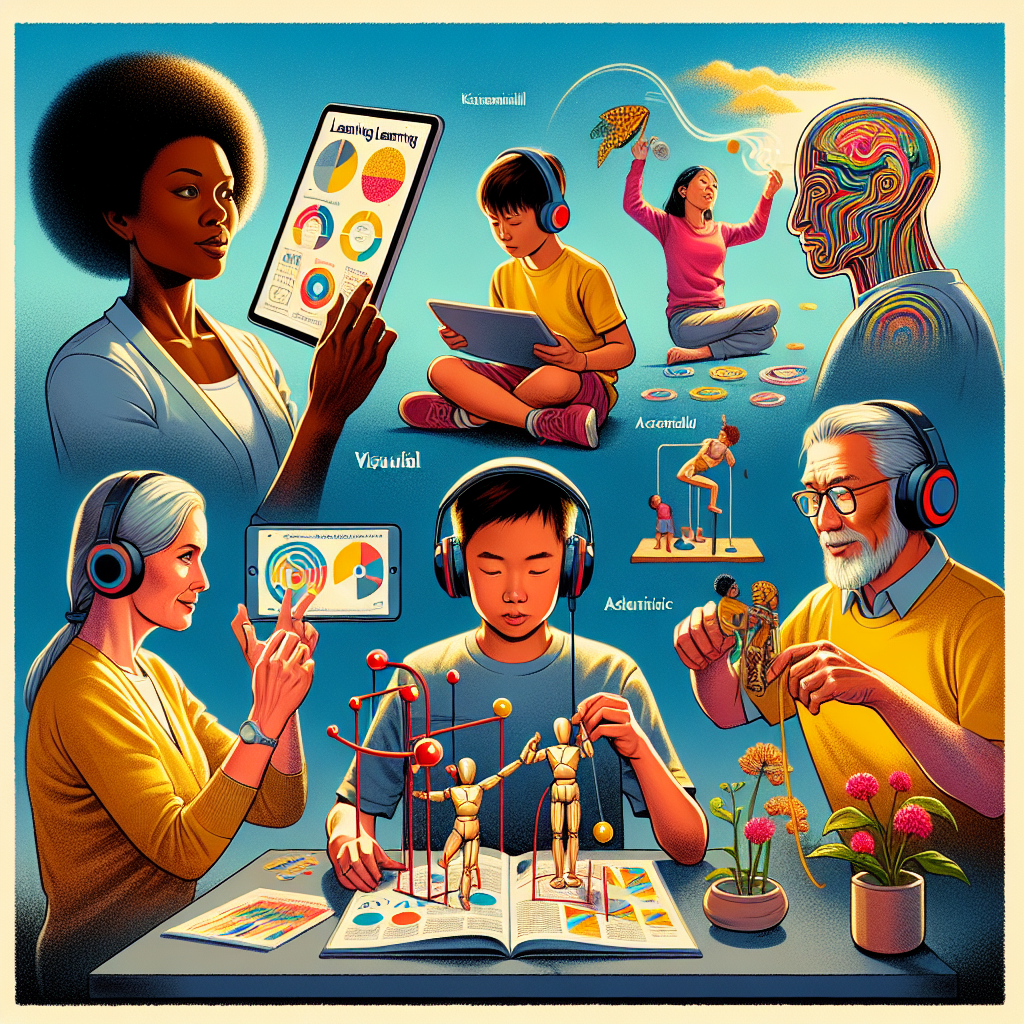Introduction
Imagine walking into a classroom where every individual learns differently, yet the teaching style is a one-size-fits-all approach. This scenario is not just a figment of imagination; it’s a reality most educators and learners face today. The concept of learning styles has long been a subject of interest and debate among educators, psychologists, and learners alike. Learning Styles Decoded: What the Latest Research Reveals can help us untangle this intricate web of theories and clarifications surrounding how we learn best.
As we dig into this topic, we will explore diverse learning styles, their origins, contemporary classifications, and most importantly, what recent empirical studies indicate about their efficacy. Making sense of learning styles can lead to better educational strategies, enabling educators to tailor their teaching to meet diverse learner needs.
The Genesis of Learning Styles
The concept of learning styles emerged in the late 20th century, when educators began to recognize that students absorbed information differently. There are various models, with a few prominent ones standing out:
- VARK Model: Visual, Auditory, Reading/Writing, Kinesthetic.
- Kolb’s Learning Styles: Concrete Experience, Reflective Observation, Abstract Conceptualization, Active Experimentation.
- Gardner’s Multiple Intelligences: A broader approach that categorizes types of intelligence beyond traditional academic skills.
These models aim to offer personalized paths to learning, encouraging educators to consider how individuals may thrive under varying instructional methods. Yet as we will soon see, these models, while popular, are increasingly questioned.
The Current Landscape of Learning Styles
Are Learning Styles Effective?
While the idea of personalized learning resonates with many, recent research has discovered potential shortcomings in the application of learning styles. A comprehensive review conducted by the Psychological Science in the Public Interest journal in 2020 found that evidence consistently fails to support the idea that matching educational strategies with learning styles improves learning outcomes.
| Learning Style | Effectiveness Based on Research |
|---|---|
| VARK | Lacks robust empirical support |
| Kolb’s Styles | Varied applicability |
| Gardner’s Intelligences | More aligned with broad educational goals but less about learning styles |
Case Study: The VARK Model
A primary example is the VARK model. A school in Britain adopted this framework for personalization in its teaching strategies. Initial enthusiasm waned when tests indicated little improvement in overall student performance. Despite varied teaching strategies, the school found that aligning with students’ perceived learning styles did not yield significant advantages.
Analysis: This case highlights how implementing a popular model without empirical backing can result in resource misallocation and ultimately, unmet students’ needs.
Recent Findings and Insights
The Importance of Context
Recent research emphasizes that learning is not solely about style but is context-dependent. Cognitive load theory and retrieval practice have shown that students often perform best when teaching is aligned with content complexity rather than learning styles.
Brain Plasticity
Studies have also revealed impressive brain plasticity; our brain’s capacity to adapt to new information can often outweigh pre-existing styles. Learning is an evolving process, suggesting that invoking varied teaching methodologies might yield better long-term learning results than strictly adhering to one established learning style.
| Key Findings | Implications for Educators |
|---|---|
| Context matters | Tailor teaching methods to the content |
| Emphasize engagement | Use diverse methodologies to foster engagement |
| Encourage adaptability | Train students in various learning techniques |
The Role of Technology
With the advent of e-learning, technology has reshaped the educational landscape. Programs designed to adapt to user interaction can offer insights into a learner’s preferences—beyond traditional learning styles to include interests and real-time performance metrics.
Case Study: Adaptive Learning Platforms
A recent study analyzed the effectiveness of an adaptive learning platform in several universities. Students utilizing the platform, which adjusted content delivery based on user engagement and performance, significantly outperformed their peers using standard teaching methods.
Analysis: With technology personalizing the education experience, it stands to reason that more focus should be placed on adaptive learning rather than rigid learning styles.
Practical Applications
Tips for Educators
- Embrace Diversity: Use a blend of teaching methods catering to various cognitive processes.
- Encourage Self-Knowledge: Urge students to identify their strengths and weaknesses.
- Utilize Assessments: Regular assessments can help track what strategies work best.
Tools for Learners
- Resource Accessibility: Encourage learners to utilize varied resources—videos, podcasts, and readings.
- Utilize Study Techniques: Promote techniques like mind mapping or summarizing.
- Peer Learning: Foster collaborative learning experiences where students can benefit from diverse thought processes.
Conclusion
In the quest to fully understand how students learn, exploring Learning Styles Decoded: What the Latest Research Reveals offers enlightening avenues for both educators and learners. While the idea of distinctly categorized learning styles is tempting, the evidence increasingly points towards a more nuanced and holistic approach.
By embracing varied instructional methodologies tailored to content, employing technology for personalized learning, and cultivating an adaptable mindset in students, we can elevate the educational experience for all.
FAQs
1. What are the most common learning styles?
The most commonly referenced learning styles include Visual, Auditory, Reading/Writing, and Kinesthetic, often collectively known as the VARK model.
2. Do matching teaching methods with learning styles improve outcomes?
Recent research suggests that matching teaching methods with learning styles does not significantly enhance learning outcomes. Context and content alignment play a more critical role.
3. How can educators apply recent findings about learning styles?
Educators should focus on flexible teaching methods that engage students in multiple ways rather than adhering strictly to learning style classifications.
4. What role does technology play in learning preferences?
Technology can help create adaptive learning environments that personalize educational content based on individual user interactions and performance.
5. Why is understanding learning styles still relevant today?
While the rigid application of learning styles may be misguided, understanding various approaches to learning can enrich teaching and enhance student engagement when used flexibly.
By understanding and applying these principles, educators and learners alike can navigate the complexities of learning styles for a brighter educational future.

